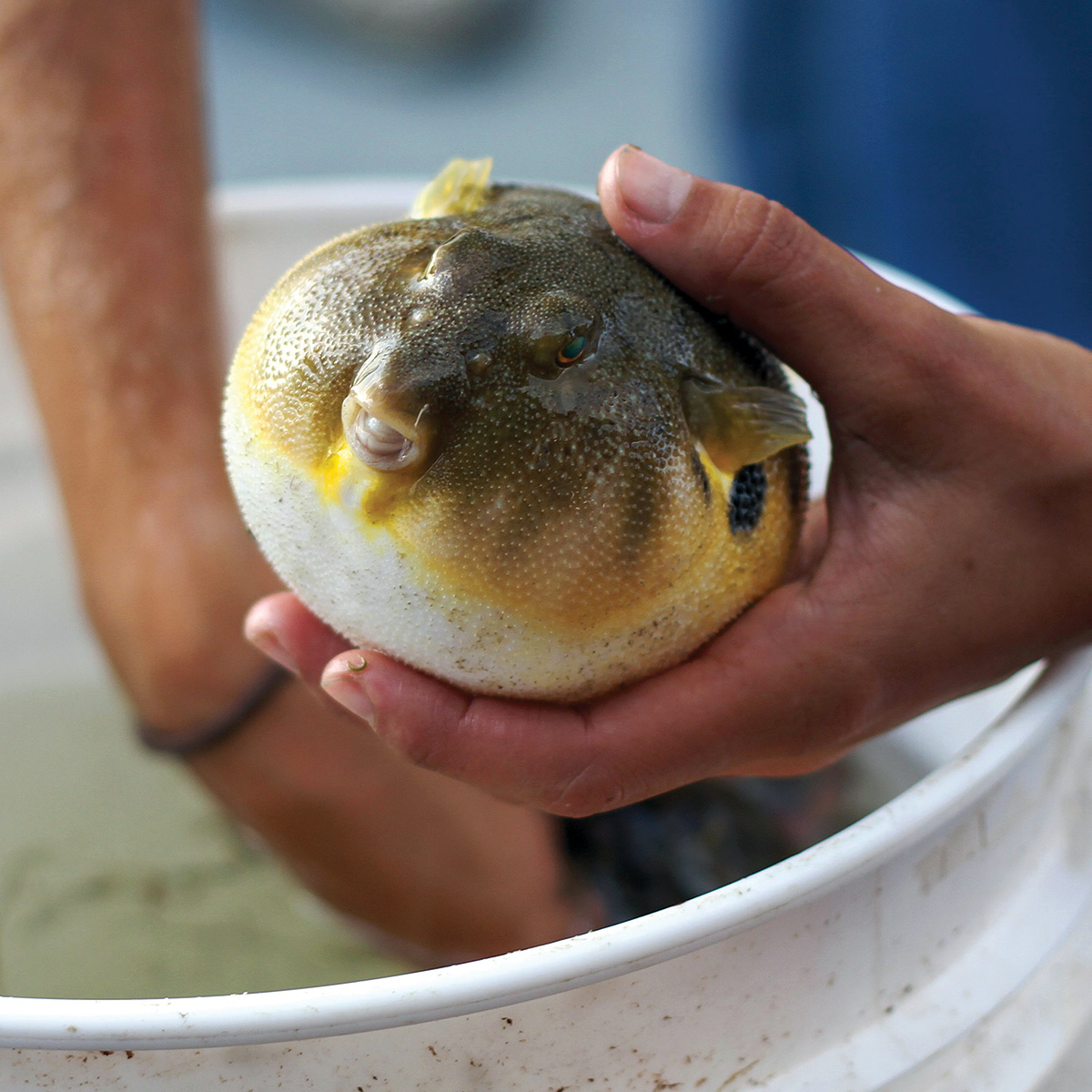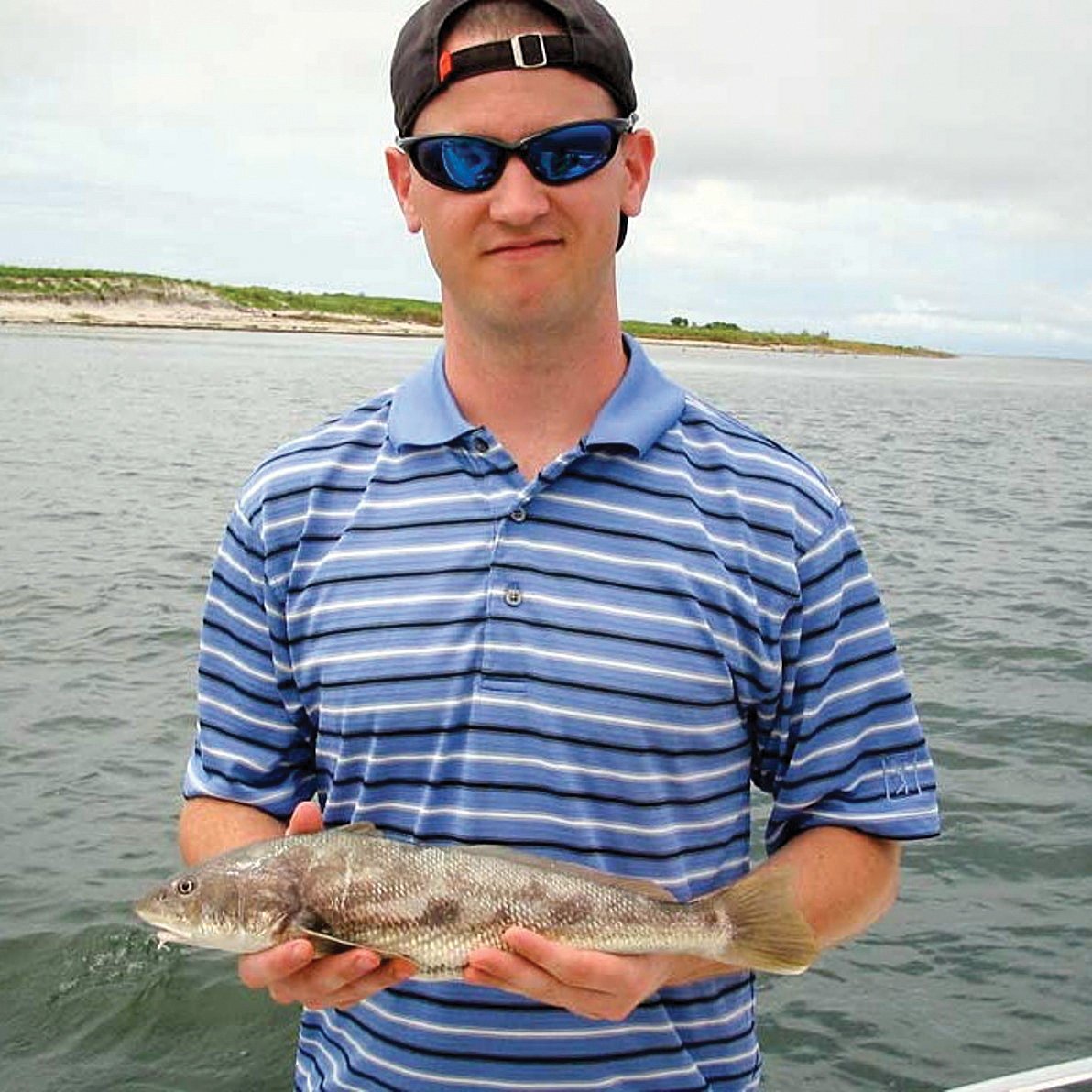
One of my favorite things to do in the fall is hit the local wrecks and pieces that sit outside of Moriches Inlet. This oasis in the desert is alive with ground fish and gamesters alike that often make for a great day of action on the big pond. Unfortunately September through November is also hurricane season. Thankfully we don’t see much in the way of destruction (with the exception of Super Storm Sandy) however we often feel the effects of those severe low pressure systems that pass through the offshore waters of the Northeast that create strong rip tides and huge dangerous breakers just outside the south shore inlets, especially Moriches Inlet. It can be quite deceiving because most often as these fronts pass, aside of a breeze, the mainland often enjoys sunshine and warm temperatures. You think to yourself if you can get past those breakers, chances are sea conditions will be fishable in a southeast swell.
But hold on my friends. Before you decide to chance it with a swashbuckling adventure; don’t. Conditions can be so treacherous at Moriches Inlet, those breakers can make the Bering Sea look like Lake George. I have seen large solid open boats like the Speedy VII and the Starstream turn around and go back to their home ports from Fire Island and Jones Inlets, and those breakers are not as violent compared to the Moriches breakers. Wherever it may be, the sea is nothing to mess with, as no fishing trip is worth risking lives. Should this be the case, well then fret not, you can salvage the day and head for the honey holes of Moriches Bay where you can enjoy a few hours of fast paced bottom fishing and possibly put a striper or two in the ice box.
Small but Productive
Moriches is a small and shallow bay approximately 9,500 acres in size. The north end of the bay is fed by brackish water from rivers such as Forge and Speonk as well as countless small feeder creeks that lay along the mainland from east to west. Most of the shallow flats sit on the south side of the bay, therefore caution is advised while boating. The main channel in the center of the bay varies in depth between 6 and 30 feet. From the west end of the bay, which starts east of the Smith Point Bridge, is actually Narrows Bay, that spills out into Moriches Bay as you pass buoy 11 going east bound, and then narrows down once again on the east end of Moriches from buoy 30 to buoy 36 by the West Hampton Bridge. Most of the fishing in this bay takes place in both the East and West Cuts, which ranges from buoys 14 to 26. However there are countless productive honey holes both in Narrows Bay and east by the Speonk River that come alive in September and October with myriad bottom fish that some anglers fish for the dinner table, while savvy anglers catch and convert the smaller panfish for livelining in search of quality striped bass and gator blues.
An Aquarium
Come September, who knows what will get plucked from these honey holes? Mixed size scup usually lead the pack, with a hefty population of pin sea bass running a close second, although you may be able to cull a couple of keeper biscuits. Blowfish have become numerous in these spots during the past few falls providing plenty of fine table fare. Kingfish have also shown a resurgence, which also make for fine table fare, however the kings also make for deadly livelining striper candy. Speaking of striper candy, if you are in search of it, you’ll be excited to know that these holes play host to our southern guests of croakers and spots, which are the crème de la crème of bass candy, especially inside Moriches Inlet. Snapper and gator blues, fluke, weakfish and of course sea robins also frequent these haunts.
Where to Start
I would need a lot more space than what I’m allowed to print to name all of the productive spots that span along this body of water. Therefore to cut it short, but detailed, I’ll break it up so that you have a general idea of what to look for.
Narrows Bay: This part of the Moriches estuary is lined between buoy 11 to the Smith Point Bridge. At the bridge, fishing close up to the abutments produces many porgies and small sea bass, with an occasional striper or weakfish falling to a clam bait on a high/low rig. This spot is best fished during the week when boat traffic is at its minimum. Try fishing here on the last hour of the flood tide when the swift currents begin to ease. Steaming east, a drop just south of buoy 5, which is directly across from the Cranberry Dock on the north side, and the Smith Point Campgrounds on the south side, has a relatively large hole that drops to 30 feet. You have to skim some shallow water before you can get to it. The hole is quite muddy but holds an enormous amount of bait, which makes this spot a great bluefish stop. The bluefish stay deep here therefore don’t expect any bird activity. Some stripers and a weakfish or two also frequent this hole and have saved the day for me more times than I’d like to admit. This is a spot where drifting is paramount as anchoring and bottom fishing is not worth the effort. (Please also note that these honey holes I’m pointing out are not marked on any nautical charts.) Keep steaming east and anchor just southeast of buoy 8 in 10 feet of water. Here is a great stop for kingfish, blowfish, small weakfish and porgies. Chumming is a must, and both sides of the tide are productive.
Moriches Bay: Moving along into the bay, a look just south of buoy 14 and you’ll notice the sleek green and red marker buoys that lead boaters to Great Gun Dock. Try anchoring and fishing just east or west of the first set of markers in 8 feet of water. This area holds a solid population of kingfish and blowfish. Some fluke and even a stray flounder are in the mix. The start of the outgoing tide and plenty of chum should keep you busy. Before we head all the way east, keep in mind that live spot, croaker, kingfish and porgies are the difference like night and day. Take these baits to the inlet, the backside of the inlet, the Elbow and between buoy 23 and 26 during an ebbtide, and especially if you have some breeze out of the east or northeast and you’re going to put bass on the boat. Toss an artificial or drag some eels at the same time, and more than likely you’ll be zonked. The artificial lures work great for the jetty jocks, while live eels are definitely a night bait here. Continuing on to the east, you come to wonderland, which is between buoy 30 and 31. It is here that the sky’s the limit as there are countless pockets, drop-offs, shoals and honey holes that rest in 12 to 33 feet of water. Buoy 31 is right off Speonk Point, and where the water drops off at its deepest. This is where both the croakers and spots are abundant along with the other species. Therefore make sure the water is circulating in the live baitwell, as odds are you’re going to need it.

Anchor and Chum and They Will Come
The bottom feeders have to find you instead of you finding them. Therefore anchoring is imperative, and let the chum pot do the work. As for anchors, the standard anchor that is required for the size of the vessel will be fine. Moriches is shallow enough to where the standard 150 feet of rope is satisfactory for scoping. As for chum, the typical frozen clam logs sent to the bottom in a wire mesh pot attracts everything in its trail, which often results in fast action. The advantage of employing chum is that you don’t have to be precise at where you anchor. If you plan on bringing some fish home for the dinner table, I suggest putting out two pots and bringing along a dozen logs as they do thaw quite quickly since the bay water is still relatively warm. If you’re fishing for live bait only, it would be much more beneficial drifting rather than anchoring as more ground can be covered.
On the Light Side
With the exception of the inlet, the current is quite mild in Moriches Bay. And even at times when the current can soar due to lunar phase and wind, the water is shallow enough to keep things on the light side. Light bait casters are best suited in the 10- to 12-pound class as you really will never need a sinker more than 3 ounces. Two-ounce sinkers are standard at either side of the bay. Of course if you plan on transferring your catch to a striper bait, then you’ll need to beef the tackle up a bit. Sticks with a bit of backbone at the tip in the 10- to 20-pound class along with a solid reel capable of handling the stress of a potential jumbo bass suit well.
Bait and Rigs
Bait is quite simple, small strips of fresh clam, strips of squid and sand worms are gladly accepted by all the feisty species. Rigs can go two ways; hi/low and tandem hooked rigs. For species such as porgies, sea bass, spot, croaker and weakfish, hi/low rigs blend well. If tasty kingfish and blowfish are going into the cooler, then tandem rigs keep the baits on the bottom where the duo does their best chewing. As for hook style and size, baitholders number 4 and 5 are universal, and should be able to handle the mouths of all the sea critters. If you are just fishing for bait and in a rush to get to a certain tidal stage, and don’t want to fuss with chum and natural baits, a 1-ounce diamond jig attached to a sabiki rig works duping croakers and spots in the area between buoys 30 and 31. While there are countless styles of sabikis, I have had good success with the Marathon Flash Tail in red/chartreuse and rainbow. Just jig the rig along the bottom, preferably in the 25- to 30-foot depths. In addition to this area, spot can be quite plentiful south of buoy 15 and by buoy 17. If you are going with the sabiki, drifting and bouncing the rig along the bottom is certainly the best way to go.
This fall don’t let the offshore low pressure systems ruin your plans, just have Moriches Bay strategies as alternatives. Odds are you’ll put some tasty panfish fillets on the table and a good chance of some striper fillets as well.




